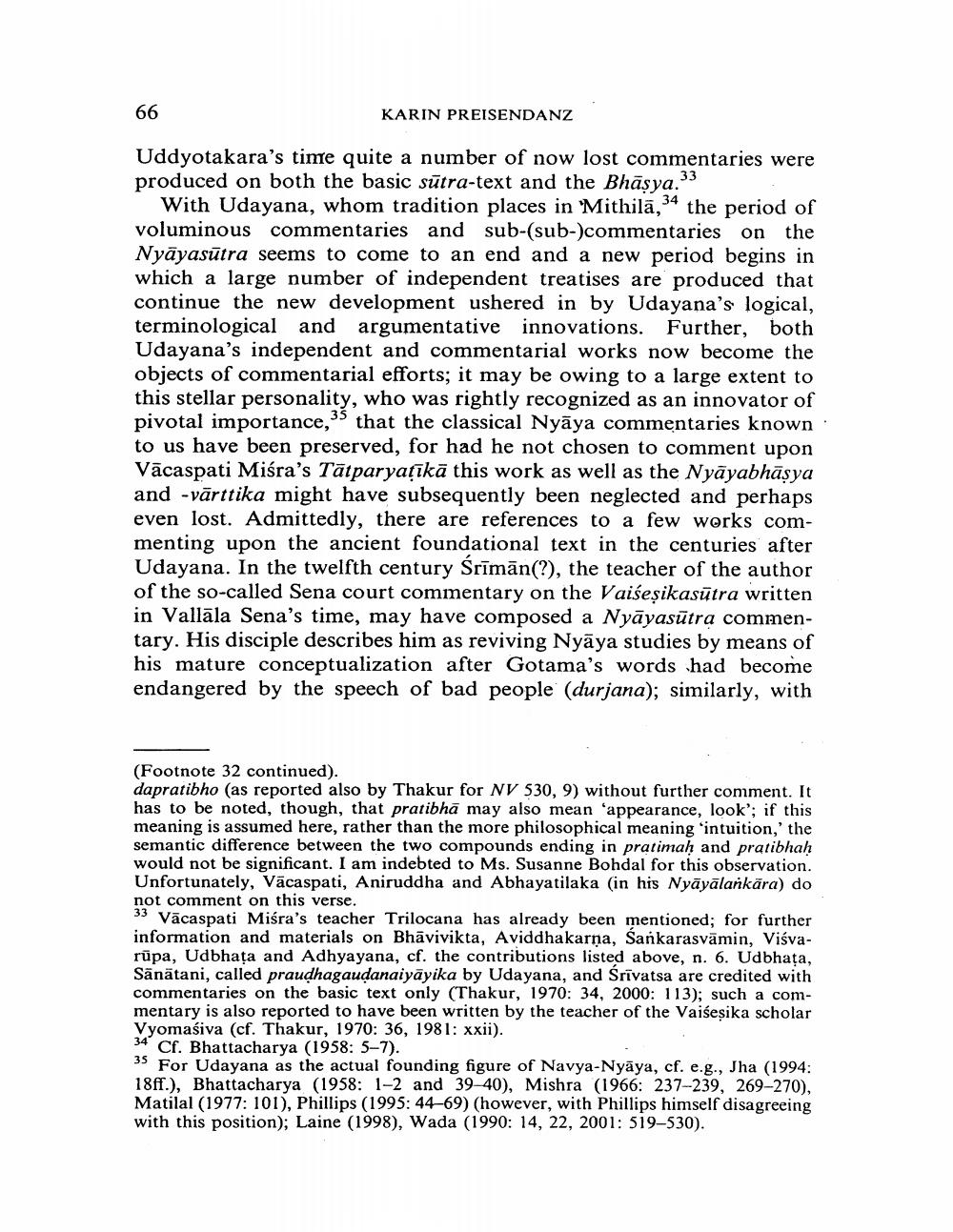________________
66
KARIN PREISENDANZ
Uddyotakara's time quite a number of now lost commentaries were produced on both the basic sūtra-text and the Bhāsya.33
With Udayana, whom tradition places in Mithilā,54 the period of voluminous commentaries and sub-sub-)commentaries on the Nyāyasūtra seems to come to an end and a new period begins in which a large number of independent treatises are produced that continue the new development ushered in by Udayana's logical, terminological and argumentative innovations. Further, both Udayana's independent and commentarial works now become the objects of commentarial efforts; it may be owing to a large extent to this stellar personality, who was rightly recognized as an innovator of pivotal importance,"s that the classical Nyāya commentaries known to us have been preserved, for had he not chosen to comment upon Vācaspati Misra's Tātparyațīkā this work as well as the Nyāyabhāsya and -värttika might have subsequently been neglected and perhaps even lost. Admittedly, there are references to a few works commenting upon the ancient foundational text in the centuries after Udayana. In the twelfth century Srīmān(?), the teacher of the author of the so-called Sena court commentary on the Vaiseșikasütra written in Vallāla Sena's time, may have composed a Nyāyasūtra commentary. His disciple describes him as reviving Nyāya studies by means of his mature conceptualization after Gotama's words had become endangered by the speech of bad people (durjana); similarly, with
(Footnote 32 continued). dapratibho (as reported also by Thakur for NV 530, 9) without further comment. It has to be noted, though, that pratibhā may also mean 'appearance, look'; if this meaning is assumed here, rather than the more philosophical meaning 'intuition,' the semantic difference between the two compounds ending in pratimah and pratibhah would not be significant. I am indebted to Ms. Susanne Bohdal for this observation. Unfortunately, Vācaspati, Aniruddha and Abhayatilaka (in his Nyāyālankära) do not comment on this verse. 33 Vācaspati Miśra's teacher Trilocana has already been mentioned; for further information and materials on Bhāvivikta, Aviddhakarna, Sankarasvamin, Visvarūpa, Udbhata and Adhyayana, cf. the contributions listed above, n. 6. Udbhata, Sānātani, called praudhagaudanaiyāyika by Udayana, and Srivatsa are credited with commentaries on the basic text only (Thakur, 1970: 34, 2000: 113); such a commentary is also reported to have been written by the teacher of the Vaiśesika scholar Vyomasiva (cf. Thakur, 1970: 36, 1981: xxii). 34 Cf. Bhattacharya (1958: 5-7). 35 For Udayana as the actual founding figure of Navya-Nyāya, cf. e.g., Jha (1994: 18ff.), Bhattacharya (1958: 1-2 and 39-40), Mishra (1966: 237-239, 269-270), Matilal (1977: 101), Phillips (1995: 44-69) (however, with Phillips himself disagreeing with this position); Laine (1998), Wada (1990: 14, 22, 2001: 519-530).




